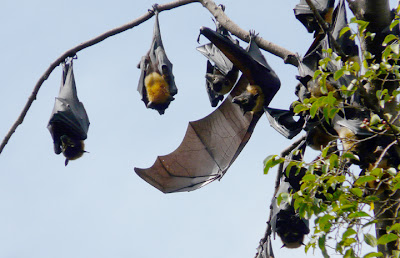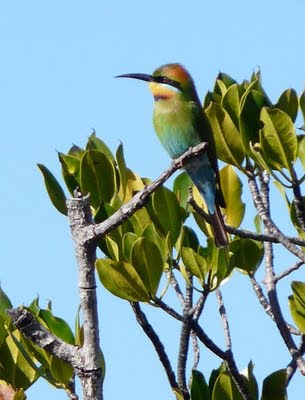Powerful Owl on Mt. Coot-tha (Photo by Narca)
Our friend John Coons, a leader for Field Guides, has given us a tip about where to find a Powerful Owl: the track at Mt. Coot-tha near Brisbane. We arrive there and find a whole maze of trails, none of them seeming to match John's description of the place. So... what to do?
It's early morning in eastern Australia; mid-afternoon––yesterday––in Arizona. I pull out my cell phone and it works! "Hi, John, this is Narca."
"Where are you?!" "Australia, on the top of Mt. Coot-tha, and we're confused." Soon John has set us straight, and we are climbing a trail alongside a stream, an excited Noel in the lead. He is first to spot the owl.
A bird of of great dignity, the Powerful Owl is unperturbed by our adoration and photo-taking. It's in a quintessentially Australasian genus of owls, the Ninox. Ninox owls are quite unusual, not only in their proportions, but in the fact that the males of the three largest Ninox species (including the Powerful Owl) are larger than the females. Usually it's the other way around in raptors.
Biologists have advanced many theories to try to explain the usual larger size of female raptors, but Noel says that they nearly always ignore the big exception to the rule: the three Ninox owls. He thinks that understanding the exception holds the key to our understanding the basis for the entire phenomenon of female raptors being larger than male raptors. I'm intrigued by that insight.
Aboriginal art on Mt. Coot-tha (Photo by Narca)






















